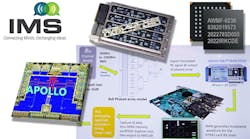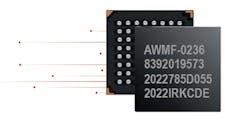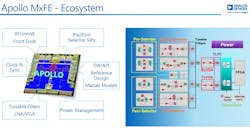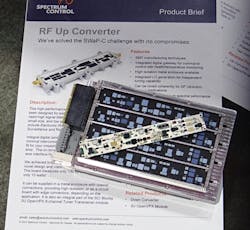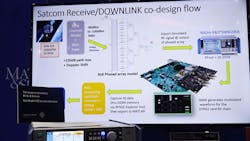What IMS 2023 Told Us About Technology Trends
This article is part of our IMS 2023 coverage.
What you’ll learn:
- At industry events, pay attention to technical sessions and exhibits to discern trends.
- System complexity demands innovation in software-defined design elements.
- Model-based design is another approach to handle growing system complexity.
Annual industry gatherings like the International Microwave Symposium (IMS) are worthwhile in numerous ways. Of course, it’s great to get out of the house/office and see the people you interact with remotely throughout the year. But more importantly, an event like IMS presents a snapshot of where the industry finds itself, and a glimpse of where it might be headed.
Clues to technology trends are found in many places. Certainly, wandering the exhibit floor and speaking to industry movers and shakers is paramount in discerning patterns shaping technology. Examining product launches can tell you something about where we are now vs. then. And don’t forget the technical sessions—they’re put together by people in the know who want to lay groundwork for what’s on the horizon and beyond. Let’s look at a few emerging trends evident at this year’s IMS:
Rising Frequencies and Bandwidths
Recent spectrum auctions by the U.S. Federal Communications Commission (FCC) emphasize that the mmWave bands are a priority for the future of 5G. Auctions in the 24-, 28-, 37-, 39-, and 47-GHz bands have released almost 5 GHz of mmWave 5G spectrum to market colonization. More spectrum is to be made available in the 26- and 42-GHz bands, and the FCC is looking into the 70-, 80-, and 90-GHz bands as well.
Designing for these mmWave bands brings a multitude of challenges, not least of which are the inherent issues surrounding wave propagation. mmWave signals simply don’t travel very far, which necessitates an increasingly dense thicket of base stations to enable mobile connectivity.
These challenges foster the trend toward various means of shaping and directing electromagnetic (EM) waves to improve propagation and increase relative signal strength in the desired direction(s) and frequencies. Beamforming technologies have been with us for some time and are gaining in importance. An example of the latest in beamforming ICs is Anokiwave’s AWMF-0236, a quad-channel, dual-polarization device that covers 37 to 43.5 GHz (Fig. 1).
But another class of technologies, explored in a Workshop at IMS, is that of engineered surfaces and materials. Researchers from Corning, the Jet Propulsion Laboratory, Georgia Tech, and the University of Waterloo presented on various aspects of exploiting the physical properties of metasurfaces, tunable materials, and more. All offer great potential in 5G/6G applications.
RF Front-End Innovation
Coupled with the accelerating move toward mmWave bands and greater bandwidths is the need for innovation to support data-intensive applications. A good deal of this innovation is happening at the receiver front end, which continues to evolve to accommodate faster data conversion and processing capabilities in support of intelligent edge devices.
One of the more interesting, and forward-looking, launches at IMS was Analog Devices’ Apollo MxFE mixed-signal front-end platform. The software-defined, direct RF-sampling platform is built for application versatility and rapid customization. Not only that, but the device is said to be the industry’s first integrated radio capable of directly interfacing to the 6G bands from 7 to 15 GHz. A key to the device’s flexibility is its dynamically configurable on-chip DSP, enabling rapid changes between narrowband and wideband profiles without disturbances to its JESD link.
An important facet of the Apollo MxFE platform, and one that portends a trend to watch, is the extensive ecosystem that ADI has built around it (Fig. 2). For platforms like the Apollo MxFE to succeed—and more will follow—is that they require a robust set of surrounding components. ADI has at the ready a PLL/VCO synthesizer, a complete power solution, a 10-channel precision synchronizer, and more.
Modularization = SWaP Gains
The flexibility and broad applicability of ADI’s new front-end platform recalls other innovations seen at IMS centered on modularity and open architectures. In 2013, the U.S. Department of Defense began mandating the adoption of Open Systems Architecture concepts for defense-related hardware and software. In the ensuing decade, a great deal of development has manifested along these lines.
Modular, highly integrated subsystems are shrinking development cycles and minimizing risk, with communications capabilities being more easily added to overall system designs than ever before.
The trend toward modularization in military/aerospace system design is well exemplified by another IMS launch—Spectrum Control’s SCi Blocks (“sky blocks”), a family of digitally enabled, plug-and-play RF functional elements that point the way toward the future of modular systems. The products come in three tiers—RF systems-in-package (RF SiPs), RF “sticks,” and Sensor Open Systems Architecture (SOSA)-aligned OpenVPX modules (Fig. 3).
Model-Based Systems Design
While not a new concept, model-based design (MBD) is a trend that’s been gathering momentum of late. MBD offers an approach to design work that’s well-suited to the growing complexity of RF/mWave/mmWave communications systems. It spans both hardware and software design, encompassing requirements specification, system architecture modeling, design implementation, simulation, automatic code creation, and all the way to verification and validation.
Various IMS exhibitors are involved in aspects of MBD. One of the foremost enablers is MathWorks, whose MATLAB and Simulink tools figure into 5G design; AI for wireless; and digital, RF, and antenna design, among other areas. One of the important aspects of MathWorks’ products is that they work together with other enabling products/technologies to facilitate MBD.
MathWorks staged several demos at IMS to show how its tools combine with other vendors’ products to allow for RF/microwave-related design work. For example, the company demoed how Otava's DTRX2 dual-transceiver mmWave radio card can team with MathWorks tools to target satellite-communications development to RFSoCs, using the Otava product to conduct over-the-air testing (Fig. 4).
Quantum on the Rise
Yet another buzzword heard often at IMS 2023 is “quantum computing.” The emerging quantum-computing industry depends heavily on microwave technologies, and the links between the two disciplines are still being forged. Yet, makers of components such as RF connectors are discovering ways to adapt (literally and figuratively) to the new alliance between quantum physics and microwave engineering.
For example, Connectronics used IMS to debut a wide array of RF connectors and adapters designed for quantum-computing applications. Such applications require components to offer non-magnetic and cryogenic attributes.
On that front, Connectronics can modify its products with base-material and plating-finish combinations that minimize the connectors’ magnetic signature. In this way, the connectors create minimal interference with the applied magnetic fields intrinsic to quantum computing.
Read more articles from our IMS 2023 coverage.
